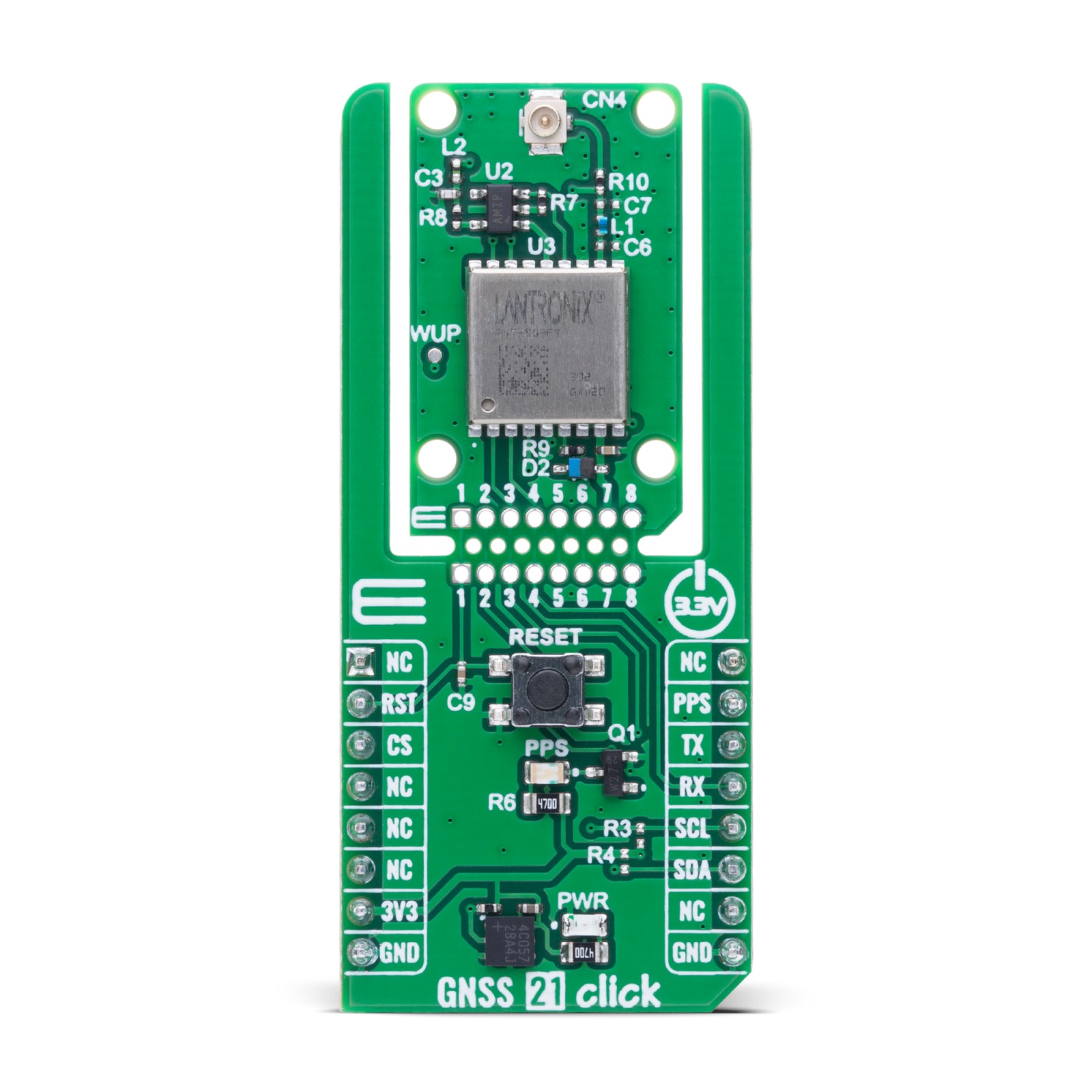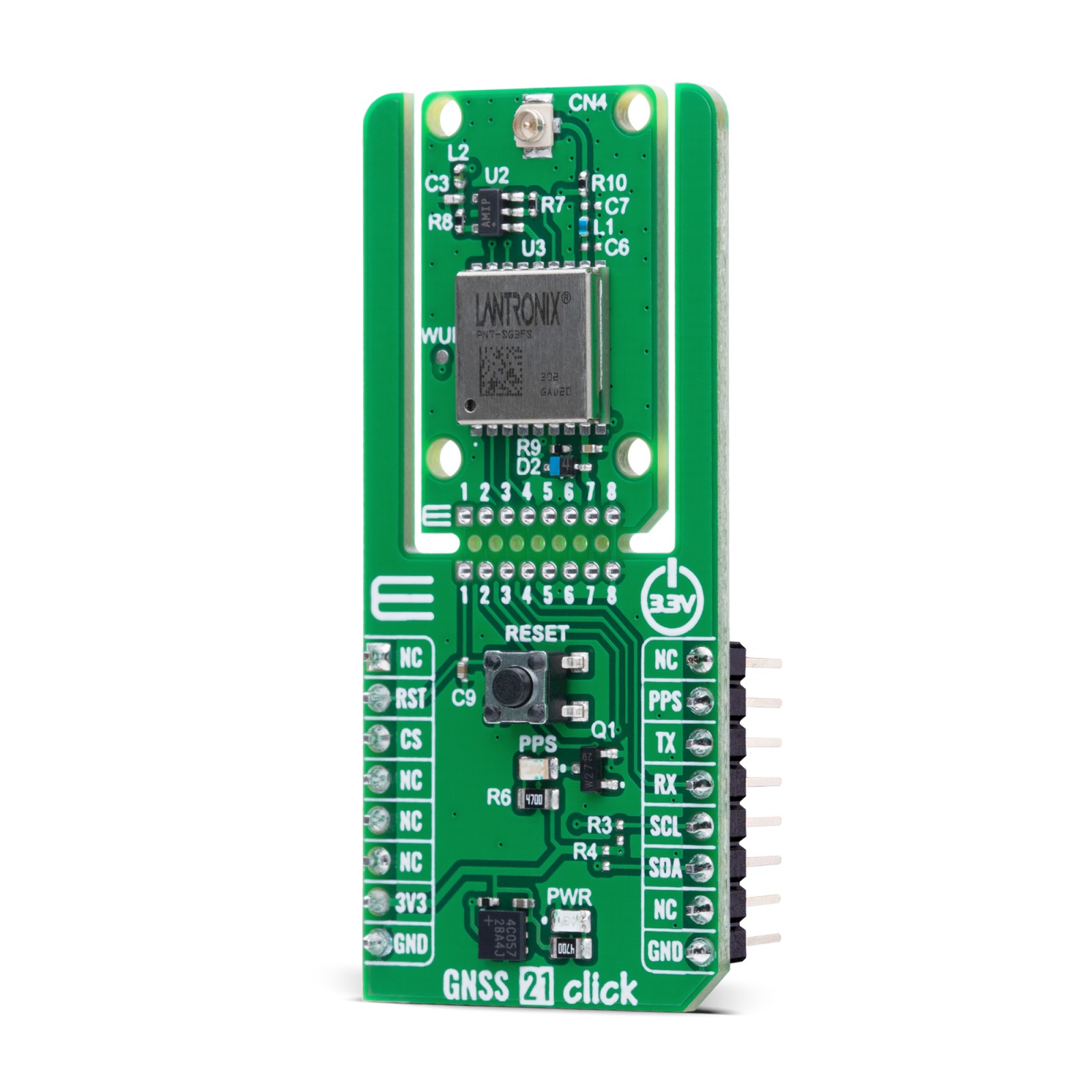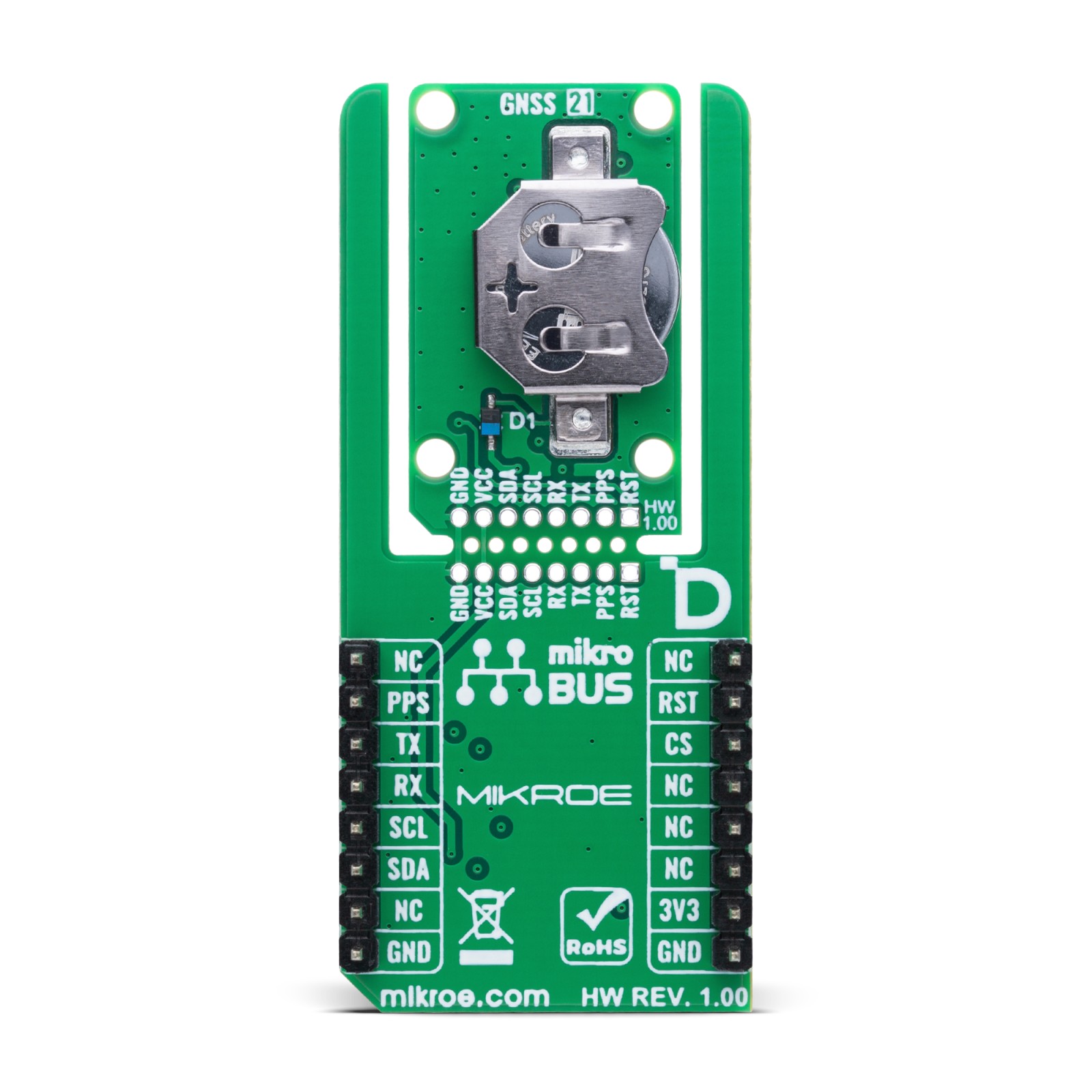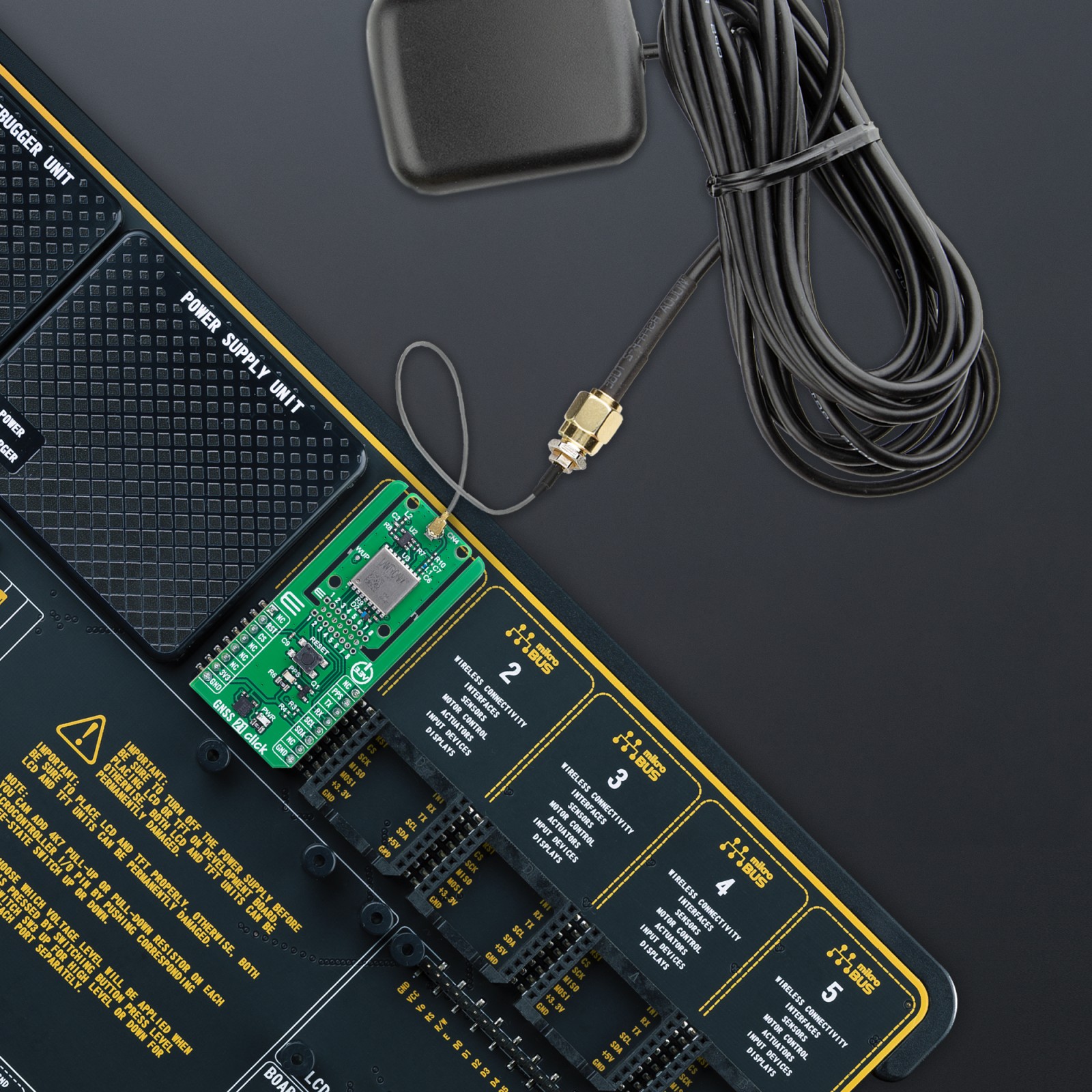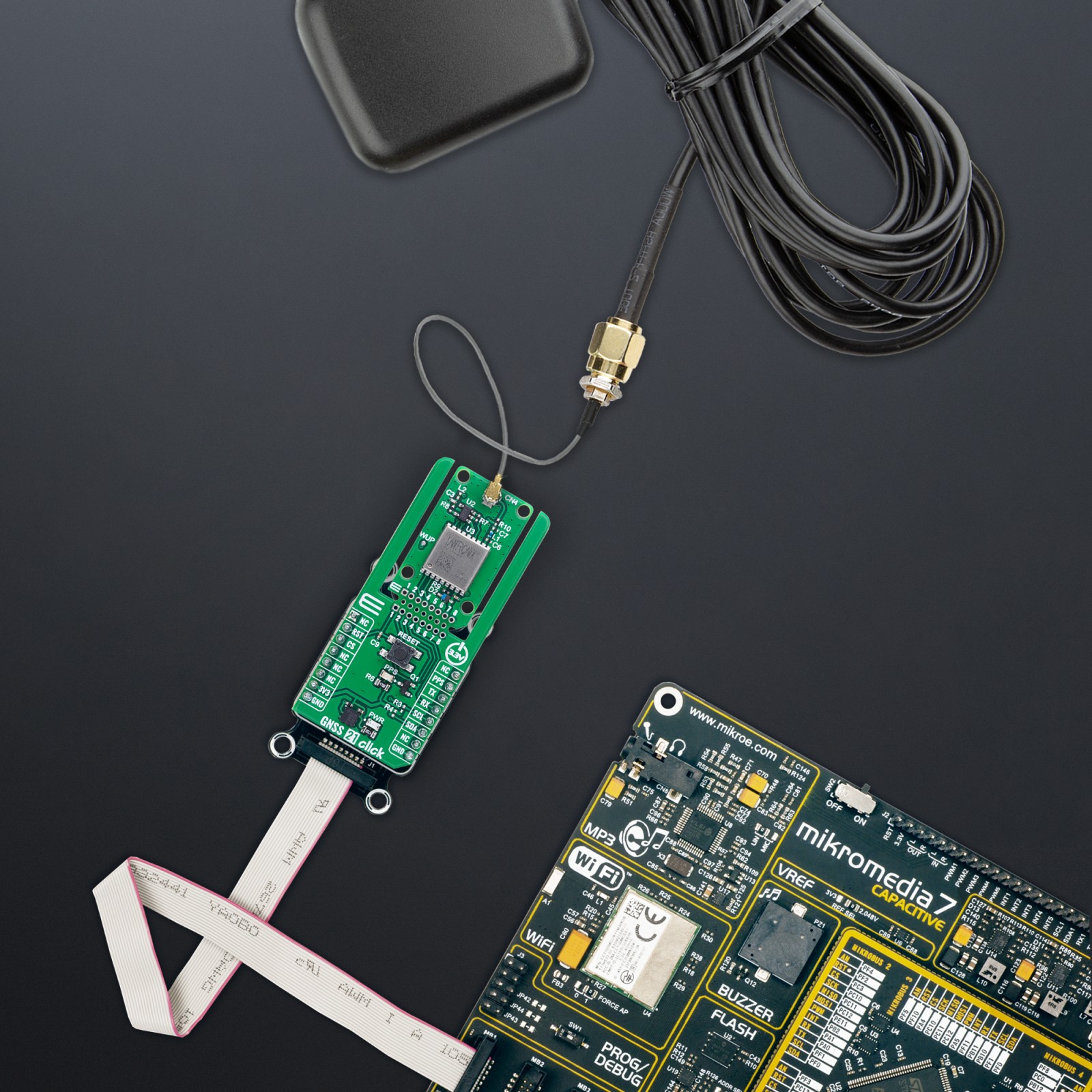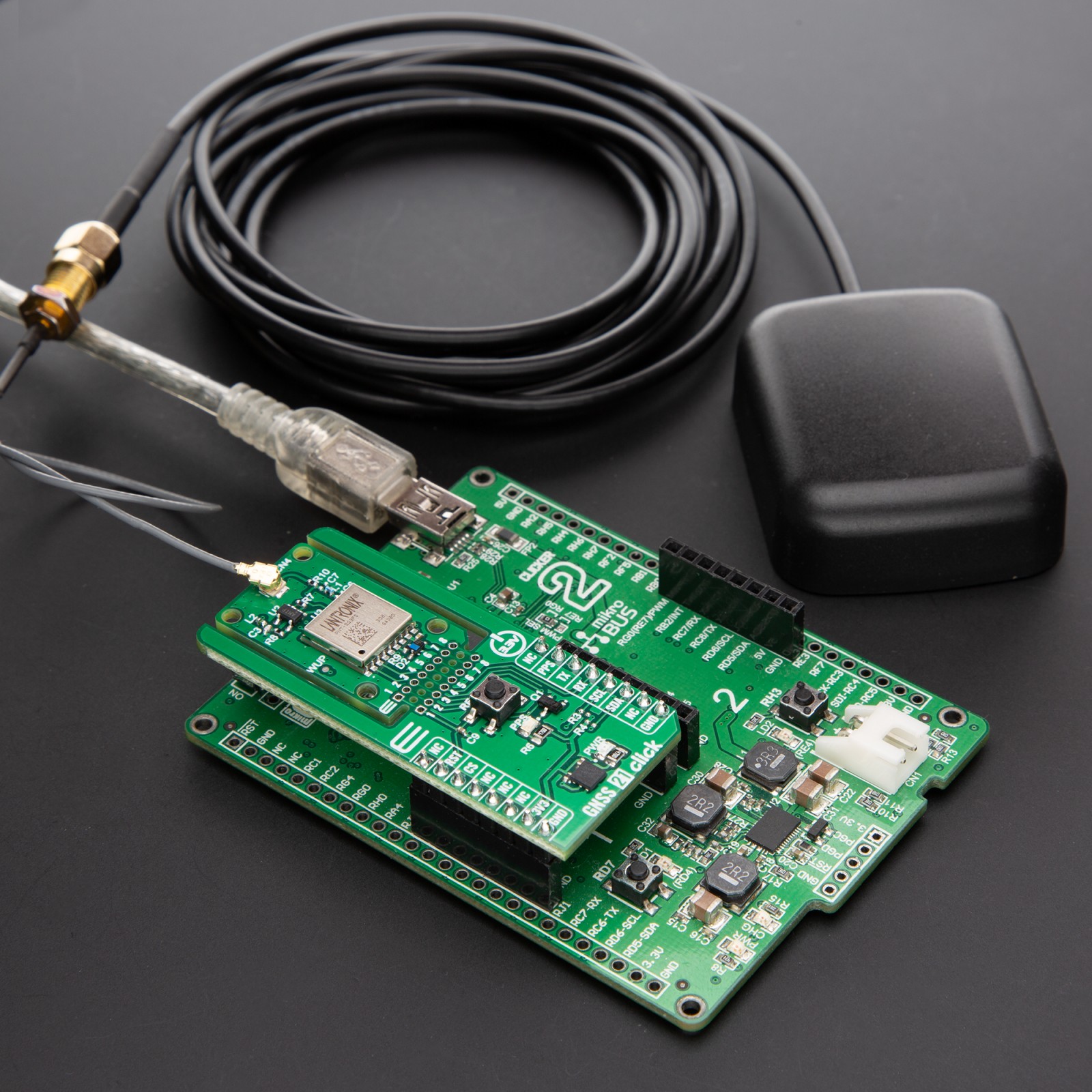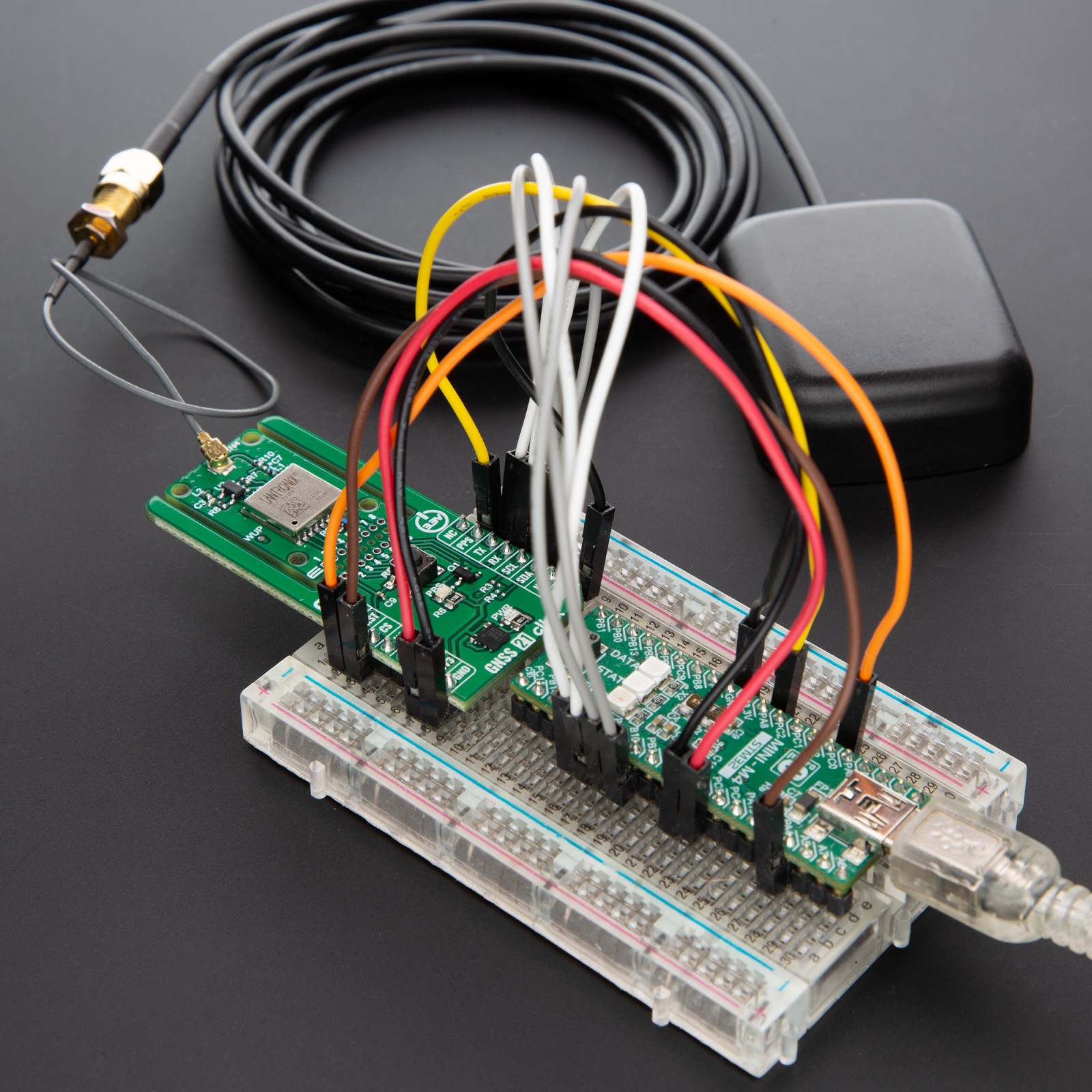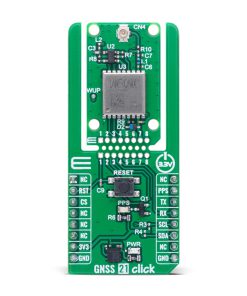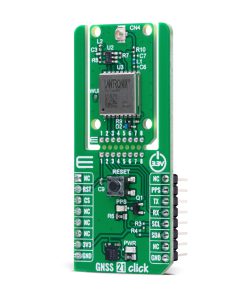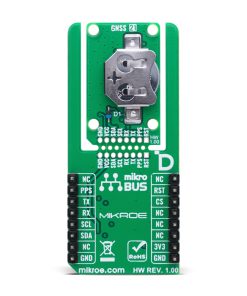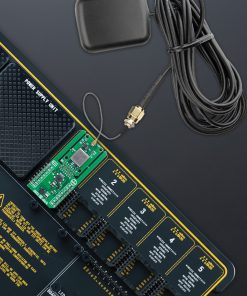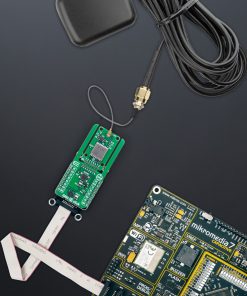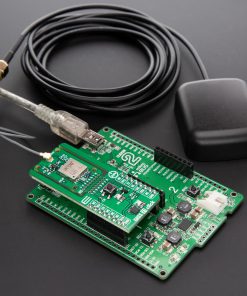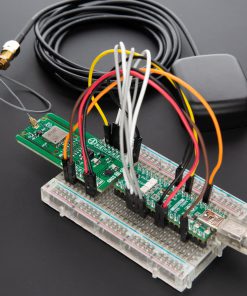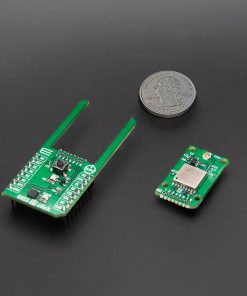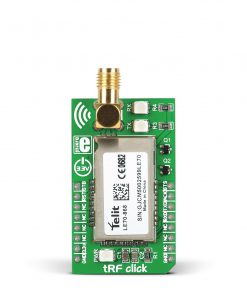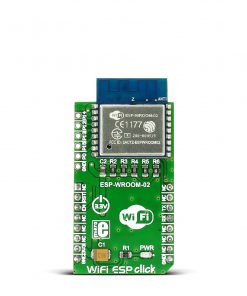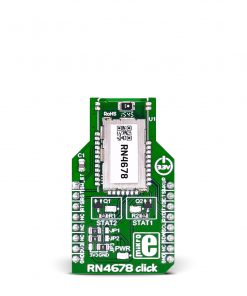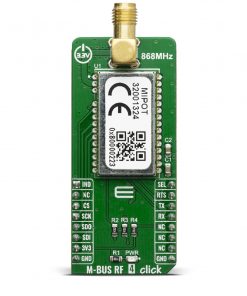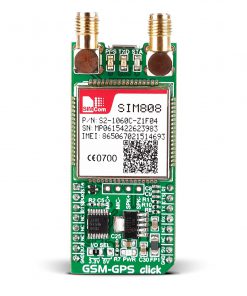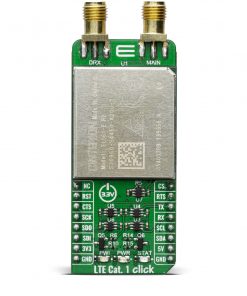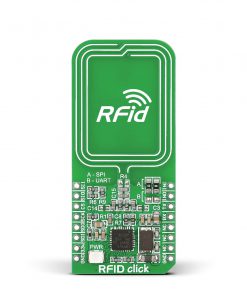GNSS 21 Click is a compact add-on board designed for precise and reliable satellite-based positioning. This board features the PNT-SG3FS, a GNSS module from Lantronix, featuring the Teseo III GNSS receiver from STMicroelectronics. This board supports multi-constellation tracking with up to 32 satellites across GPS, GLONASS, Galileo, BeiDou, QZSS, and SBAS systems, and includes features like Assisted GNSS, Differential GPS, and onboard 16Mb flash for data logging, geofencing, and firmware updates. With high sensitivity of -163 dBm, 1.5m CEP accuracy, and sub-decimeter precision when used with RTK/PPP algorithms, it ensures fast and stable performance in demanding environments. Thanks to the Click Snap feature, size, weight, and power consumption can be reduced for final-phase prototyping. Ideal for applications such as geolocation, fleet tracking, mapping, and any system requiring high-accuracy GNSS data.
GNSS 21 Click is fully compatible with the mikroBUS™ socket and can be used on any host system supporting the mikroBUS™ standard. It comes with the mikroSDK open-source libraries, offering unparalleled flexibility for evaluation and customization. What sets this Click board™ apart is the groundbreaking ClickID feature, enabling your host system to seamlessly and automatically detect and identify this add-on board, alongside a Click Snap feature introducing a new level of flexibility and ease of use.
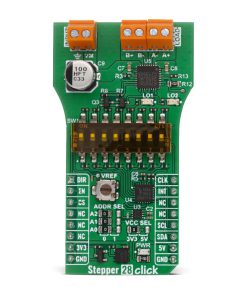 Stepper 28 Click
1 × R540.00
Stepper 28 Click
1 × R540.00 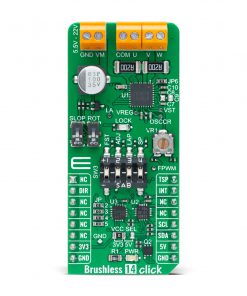 Brushless 14 Click
1 × R710.00
Brushless 14 Click
1 × R710.00 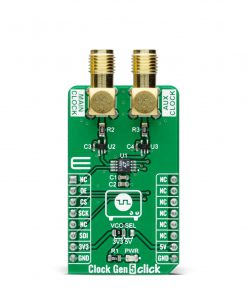 Clock Gen 5 Click
1 × R335.00
Clock Gen 5 Click
1 × R335.00 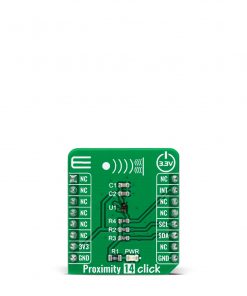 Proximity 14 Click
1 × R150.00
Proximity 14 Click
1 × R150.00 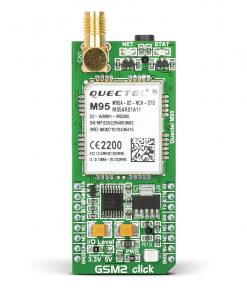 GSM2 Click
1 × R965.00
GSM2 Click
1 × R965.00 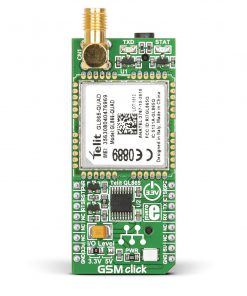 GSM Click
1 × R1,050.00
GSM Click
1 × R1,050.00  DIGI POT Click
1 × R370.00
DIGI POT Click
1 × R370.00 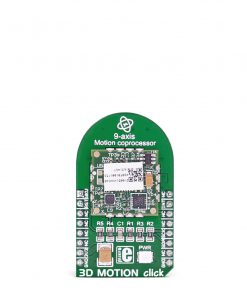 3D Motion Click
1 × R1,050.00
3D Motion Click
1 × R1,050.00 
